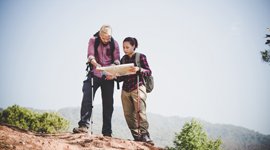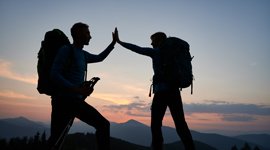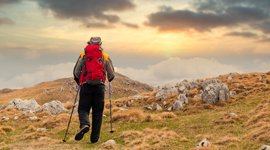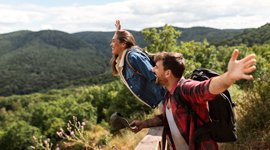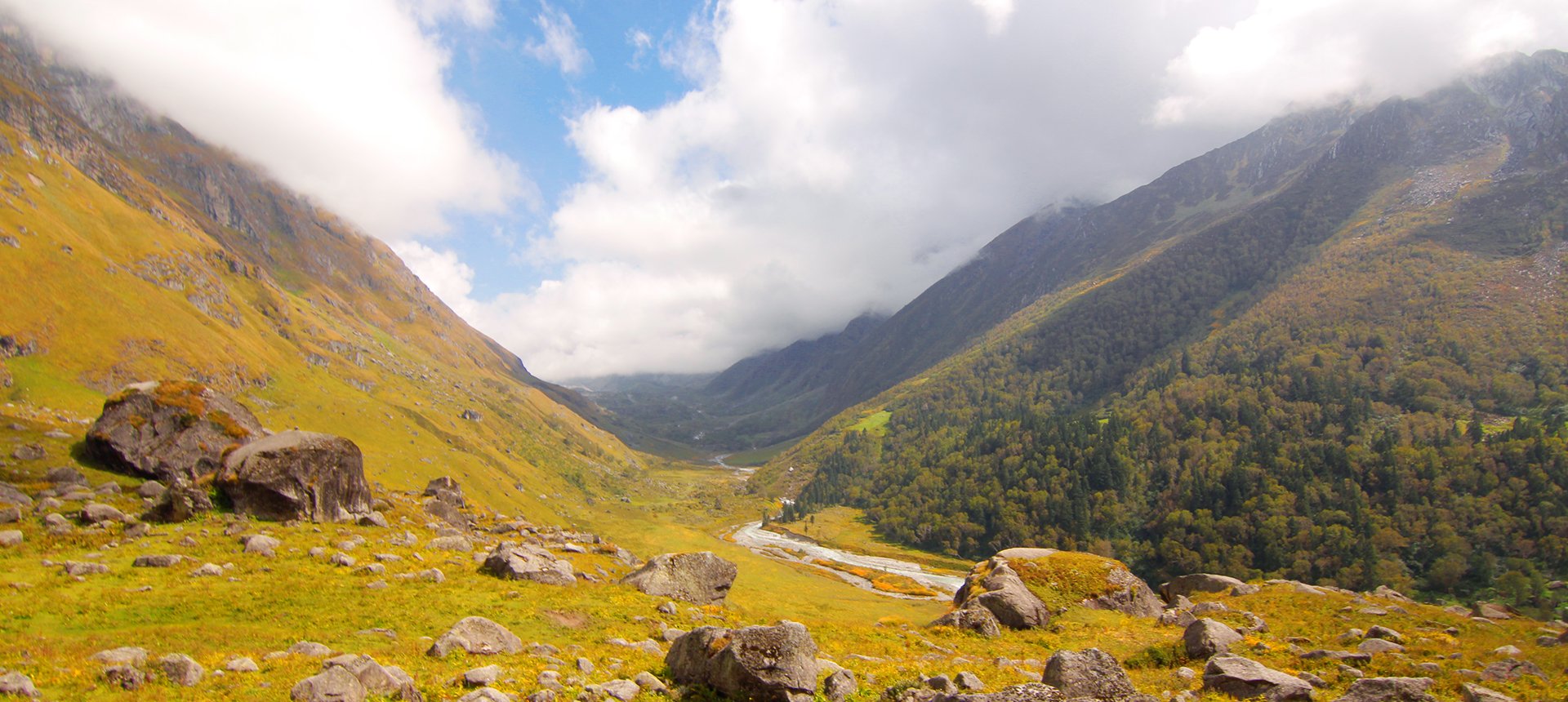
Route Length
Max Altitude
Trek Duration
Trek Difficulty
Base Camp Area
Pickup Point
10+ Years Age
First timer can apply, previous trekking experience is more appreciated.
Cover 5 km of distance in 30 minutes without a stress.
+91 7055048487, +91 7055048488
trekkingcompass@gmail.com
Har Ki Dun trek is an unforgettable journey that enchants you with its offerings and is often called “Stairway to Heaven.” The trek is famous as the “ Stairway to Heaven” because it’s the trek Pandavas took on their ascent to the heavens. Geographically placed in the western flank of the Garhwal Himalayas, this trek’s captivating characteristics are as much in its route as in its summit.
Accessible year-round, Har Ki Dun offers a different kind of beauty in every season—from the vibrant blooms of summer to the snow-covered landscapes in winter. Along the trail, you may catch glimpses of wildlife like barking deer and the striking Himalayan Monal. In your adventure, the sound of the nearby Supin River keeps you company.
The Har Ki Dun summit is worth the hassle because of the majestic Swargarohini peaks in its backdrop. To reach there, trekkers traverse through the charming alpine meadows and serene pine forests. All this while, they experience the unique lifestyle of remote mountain villages like Sankri (6,400 ft), Seema (8,500 ft), Osla (8,497 ft), and Taluka village (7,200 ft).
Starting from the quaint village of Sankri, the trek takes you to the historical temple at Osla, the one dedicated to Duryodhana. The trail takes you from culture to nature and back to culture; a unique blend of these makes the beauty of nature more evident. With a moderate difficulty level, the trek is perfect for adventures with reasonable fitness. Trekkers should come prepared as the trails can be challenging, especially during the rainy and winter season.
Whether you’re seeking breathtaking views, cultural insights, or a connection to the legendary past, the Har Ki Dun Trek is promising. It blends nature, tradition, mythology, and adventure in the captivating landscapes of Uttarakhand.
Sankri Altitude: 6,400 ft (1,950 m)
Altitude Gain: 4300 ft (1310.6 m)
Travel Distance: 220 km
Travel Hours: 10 hrs (drive)
The day’s events start as soon as you report at the given destination and get acquainted with our travel guide. At Dehradun, you get on your taxi that’ll take you to your destination, Sankri. Sankri village is our base village for the Har Ki Dun Trek, and it is 3 minutes from Kotgaon. Sankri and Kotgaon are two well known base villages for treks like Kedarkantha and Har Ki Dun trek.
The day entails a peaceful 10-hour drive to Sankri village, which is at 6,400 ft in the lap of mountains. Trekkers have to lay back, rest, and zoom into the spirals of the Garhwal hills. These roads will take you to all the sites, be they the base or the top of a hill.
The long turns around the hills are a travel-sick person’s nightmare, but they are worth it when compared to the views of streams and forests of pines and deodars. The Yamuna River and the sound of its soothing flow will accompany you from Dehradun and will be enough to lull you to sleep. The sweet smell of pines combined with the ambient music is heaven even in a vehicle.
Taluka Altitude: 7,200 ft. (2195 m)
Seema Altitude: 8,500 ft. (2,590 m)
Altitude Gain: 4,200 ft (1280.1 m)
Travel Distance: 12 km + 14 km
Travel Hours: 50 mins (drive) + 7 hrs (trek)
Today begins early to reach our first campsite in Seema at the riverside, amidst all the greenery it has to offer. First, the trekkers will board a vehicle (usually a jeep) and reach Taluka (2,195 m) after an hour-long drive. At Taluka, you get some time to recharge and your trekking experience begins as you trek downwards to the Tons River’s sides.
Hereon, the trail takes to several bridges and forest patches. First, you go through a coniferous forest patch only to reach a cemented bridge with a stream flowing below it. Next up is a wooden bridge, the stream nearby is also accessible. You can choose it to be your water source for the trek ahead and fill up your bottles.
After crossing the Tons River, beds of flowers will greet you and you can spot rare Himalayan Wildlife too. Other than that, this trek offers you one-to-one with local people, who’re more than happy to share the local culture and legends with you. At the end of this 12 km drive and 14 km trek day, you get to rest at a beautiful campsite in Seema (2,590 m).
Kalkatiyadhar Altitude: 9,850 ft (3002 m)
Altitude Gain: 1,350 ft (411.5 m)
Travel Distance: 7 km
Travel Hours: 5.5 hrs (6 hrs approx.)
The day will start at a lazy pace today, we have a trek of 7 km to cover in a span of 6 hrs (approx.). The destination for the day is the Kalkatiyadhar campsite. The trail isn't all about steep climbs and has a mix of level walks too. The camp at Kalkatiyadhar is in a forest, where trekkers can enjoy mountain views.
This trek takes you out of the thick coniferous forests of the Seema village and far away from the Supin River’s sides. The hanging bridge, a little further from Seema village, is ideal for picture enthusiasts to capture the natural beauty. On this trail, you will get some rare sightings of Amaranth trees, their vibrancy is unfathomable during Autumn. A little further into the trail to Kalkatiyadhar, you see Swargarohini and Bandarponch Peaks, they are no longer tiny and irradiate grandeur. Eventually, you reach Kalkatiyadhar, a stretch of greenery resembling a tabletop.
All you will do today is, take in the views of Kedarkantha Summit and Ruinsara Range from the campsite. Finally, you will retire for the day to rest and recharge for the summit tomorrow.
Har Ki Dun Altitude: 11,800 ft (3,597 m)
Altitude Gain: 1,950 ft (594.4 m)
Altitude Loss: 1,950 ft (594.4 m)
Travel Distance: 5 km + 5 km (10 km)
Travel Hours: 4 hrs (uphill) + 3.5 hrs (downhill) ( 8 hrs approx.)
The day starts with a newfound enthusiasm as you all know that today is the ‘The DAY.’ It’s also the reason why the day starts early as our trek today will be a start point to start point trek. Unlike other trekkers, we won’t be camping at the Har Ki Dun Valley. Our goal today is to climb the Har Ki Dun Summit at 11,800 ft and return to Kalkatiyadhar campsite.
On your way, you will come face-to-face with many wonders of nature, especially in winter, the frozen waterfalls are a sight of their own. Alongside this, there are many spring water points that you will come across, try to enjoy these sights without harming their sanctity. The 8 to 9-hour trek will have various combinations including forest walks through the pine, maple, and rhodo forests. Then the trail will take you on a boulder walk. These mixed routes will become the perfect package when this medium-difficult trek’s 4 km ascend will give a gradual incline.
The tall pines on the trek will greet you throughout the alpine meadows and moraines that you’ll cross on the trail to the Har Ki Dun Valley. Right when the trail begins from Kalkatiyadhar, you’ll cross over River Supin and Ruinsara Valley River’s convergence. Beautiful mountain views will accompany you throughout this trek and soon you will also get nearer to snow patches. The trail is covered in thick snow during the winters and is equivalent to a wonderland, straight out of the dreams.
When you reach Har Ki Dun Valley, the glimpses of Swargarohini, Black Peak, and Hathi Peak, leave you speechless. Their immense beauty keeps you awestruck and you might have trouble choosing the most memorable sight on this trek. The last ascend of the trek is at 45-degree, which becomes extra difficult during the snow. Finally, you will reach the summit and get fresh and nearer views of peaks like Swargrohini, Black, and Hata Peak. Take your time making memories here and then the day ends as you return to the campsite with heavenly memories of the summit climb.
Seema Altitude: 8,500 ft. (2,590 m)
Altitude Loss: 1,350 ft (411.5 m)
Travel Distance: 7 km
Travel Hours: 5 hrs (approx.)
This day back to Seema campsite from Kalkatiyadhar comes with a surprise as you will cross the Osla village (8,497 ft) too. The village has both mythological and cultural significance. On one hand, it tells the tale of a clan who supported the Kauravas in the Mahabharata, on the other hand, it has traditional wooden houses. These are perfect to see the evolution of human life from that time to now. To everyone’s surprise, Duryodhana has a temple too. Your doubts are confirmed when you see the Duryodhana Temple at the Osla village.
Osla village is also known for its matriarchal rule. Yes, a woman’s say is the final say at Osla Village. You will know why when you spend some time with the villagers. From Osla, a gradual and lazy descent will bring you to the campsite at Seema. Here you will rest, have your dinner, and get to reminisce about the day's events.
Sankri Altitude: 6,400 ft (1,950 m)
Altitude Loss: 4,200 ft (1280.1 m)
Travel Distance: 14 km + 12 km
Travel Hours: 6 hrs (trek) + 50 mins (drive)
Today is your final descent to Taluka, where you will board vehicles and reach Sankri within an hour. Nothing special remains for this day, only the familiar trails with a mix of bridges, rivers, and streams.
You will know your trek to Taluka is at an end as soon as you cross over River Supin on a cemented bridge. The landscape is a mix of pine, deodar, and maple trees. Take small steps while descending, and don’t stress your joints more than required.
At Taluka, board your respective taxis and reach Sankri. Rest, rejuvenate, and chat with fellow trekkers to reminisce memories and make some more. Tomorrow is a long drive to Dehradun.
Sankri Altitude: 2,100 ft ( 640 m)
Altitude Loss: 4300 ft (1310.6 m)
Travel Distance: 220 km
Travel Hours: 10 hrs (drive)
Today is the day to gather all your memories and bid adieu to Sankri village. It’s also a popular base village for Kedarkantha Trek. The day will start with breakfast and onboarding vehicles to safely drive you back to Dehradun. As you leave behind Sankri village, pine and oak trees will greet you on your way down to Dehradun, which is a 10-hour drive from Sankri.
If some of you have a buffer day, you will get enough time to enjoy the city life at Dehradun, away from the dense air in the metropolitan cities. While returning, small towns and villages like Naugaon, Purola, etc. will greet you. The most special among them is Mussoorie, a beautiful hill station with a view of the Indian Himalayan range. If Mussoorie becomes your resting spot for the day, we highly recommend Lal Tibba Scenic Point, Camel’s Back Road, and Mall Road in Mussoorie.
Accommodation
Meals (Vegetarian only with eggs option available)
Nutritious meals from Day 1's dinner to last day's breakfast, following the itinerary schedule.
Expert Support
First Aid Preparedness
Fully equipped medical kit including a stretcher, oxygen cylinder, blood pressure monitor, oximeter, and stethoscope to ensure safety throughout the journey.
Storage Facilities :- A secure room at the base camp to store additional luggage not needed during the trek.
Permits and Entry Fees :- Coverage of all necessary permits and entry fees, in line with standard charges for Indian nationals.
Transportation :- A round-trip transport from the pick-up point and back at the same point as a part of the itinerary.
Trek Equipment
Insurance :- Personal insurance is mandatory and not included in the package.
Personal Expenses :- Any expenses of a personal nature, including shopping, snacks, hiring a mule or porter for carrying your belongings, or acquiring personal equipment.
Emergency Costs :- Expenses arising from emergency evacuations, hospitalization, or any medical treatments required.
Unspecified Services :- Any services or items not explicitly mentioned under the "INCLUSIONS" section.
Food Costs :- We will not cover any food costs during your transit to and from the base village.
Trekking is not only about enjoying the change of scenery but also about being responsible. Our (Trekking Compass) responsibility is to provide you with an opportunity for a safe trek. But, how do we do that? We do that when you fulfill your end of the responsibility and are honest with us. To keep you safe we need to be sure there isn’t any inherent threat to your being.
Treks are at higher altitudes and it becomes difficult, almost impossible to provide you with immediate medical assistance. Therefore, we cannot help you if you don’t help us. Trekking is only one of the things you can do, but there are plenty of other things to do too. Don’t risk your life for the thrill.
To approach a trek with utmost safety, we want you to submit the following documents:
Personal Confirmation Statement (Compulsory for anyone over 18 years)
You are participating in a trek at high altitudes and it comes with its own sets of risks. This Personal Confirmation Statement will make sure that you understand all the risks you're buying into. Trekking Compass wants you to confirm your complete understanding of these risks so that you come prepared for any mental or physical challenges ahead.
This statement is also a declaration from you that, "All the information I have provided, including medical conditions, is true. If found false under any circumstances, I will be held accountable and it has nothing to do with Trekking Compass."
We have the utmost empathy for you and will do our best to help wherever possible, but only after assessing your readiness and safety for the trek. This is how our team will adequately prepare for whatever risks we might face during the journey. Concerning individuals are requested to thoroughly cross-check the requirements and only then sign the document.
Parent/Guardian Approval Statement (Compulsory for anyone below 18 years)
For participants under 18 years of age, the Parent/Guardian Approval Statement is essential to confirm that a legal guardian understands and consents to the participation in the trek. Once we have this document, we are affirmed that the parent or guardian is fully aware of the risks involved in trekking at high altitudes and is consenting to their child's participation.
No underage (below 18+) children are welcome on the trek without their parent's consent. Submission of this document reassures us that parents are approving that their child meets the health and fitness requirements for the trek, after a thorough examination.
This legal confirmation holds the parent liable for any discrepancies, freeing Trekking Compass from any liabilities for the same. Parents are requested to thoroughly cross-check the requirements and only then sign the document.
Medical Liability Waiver
The Medical Liability Waiver makes sure participants acknowledge the health risks associated with trekking at high altitudes. Common ailments during treks include altitude sickness, dehydration, muscle cramps, hypothermia, and fatigue, all of which can significantly affect your trekking experience. Additionally, weather changes and the physical demands of the terrain may exacerbate pre-existing conditions.
If you have pre-existing medical conditions such as asthma, diabetes, or heart issues, it’s vital to inform us and carry your necessary medications. Trekking Compass cannot provide immediate medical assistance in remote areas, so having the essential medications, such as inhalers, insulin, or any other prescriptions, is crucial for your safety during the trek.
By signing this waiver, you confirm that you are in good health and have taken the necessary precautions. You acknowledge these risks and agree not to hold Trekking Compass liable for any medical issues or accidents that may arise during the trek.
For any further doubts about anything mentioned above, below is our contact information:
OFFICE ADDRESS: Lane No. 4 Krishna Vihar Mohkampur, Dehradun, Uttarakhand, 248005
PHONE NUMBER: +91 7055048487, 7055048488
EMAIL ADDRESS: info@trekkingcompass.com
HOW TO REACH? (Dehradun)
Note: You are in for trekking in the mountain areas, here the probability of landslides, rains, etc. are very common. Sometimes political unrest also becomes the reason for hindrance in your trek itinerary. Therefore, while booking your return tickets, keep a buffer day. For instance, if your trek is 6 days long, book a return ticket for the 7th day.
What are the different ways to reach Dehradun?
Har ki Dun trek starts at Dehradun and takes you on a long drive (220 km) to Sankri. Therefore, trekkers need to reach Dehradun to start the trek. The first move for trekkers to reach Dehradun is to reach Delhi. Later, every trekker can choose their choice of transport. The available transports for Dehradun are:
Medium: BUS
Delhi to Dehradun via Haridwar (AC Volvo buses):
You have to reach Delhi’s ISBT Kashmere Gate and you won’t have a shortage of AC buses ready to take you on a 6 to 8 hrs long trip to Dehradun.
The suitable start slots for you to not miss our pick-up services on Day 1 will be 8:30 am, 9:00 am, 9:30 am, 10:00 am, 10:30 am, 11:00 am, and 11:30 am. Talking of availability, a bus to Dehradun is available every half hour from that station.
A Friendly Note: You should travel by government buses instead of private ones because the private buses tend to take more time than expected. To catch up with us at the pick-up time, try traveling by government buses, wherever possible.
Medium: TRAIN
1. Delhi to Dehradun Train Station (Train 12017): You can board train no. 12017, also called Dehradun Shatabdi Express at New Delhi Railway Station. This train goes between Delhi and Dehradun throughout the week. If you board this train you will reach Dehradun in a timespan of 6 hr 10 mins. The train leaves Delhi at 6:45 am, giving you enough time to reach Dehradun around 1 to 2 pm. Now in Dehradun, you can explore or rest to restore your energy for tomorrow.
2. Delhi to Haridwar Railway Station then to Dehradun (Train 12017): You can board train no. 12017, also called Dehradun Shatabdi Express at New Delhi Railway Station. This train goes between Delhi and Haridwar throughout the week. If you board this train you will reach Haridwar in a timespan of 4 hr 48 mins. The train leaves Delhi at 6:45 am, giving you enough time to reach Dehradun on Day 0 by 2 to 3 pm (max). At Haridwar, you can catch buses to Dehradun, every 10-15 mins. These buses will take around 1 hr 45 mins (max) to reach Dehradun.
Note: If you travel by train to Haridwar and then to Dehradun by bus, you save bucks on your ticket fare. Most importantly, you can explore Haridwar for a while, before traveling to Dehradun.
Medium: FLIGHT
Fly Directly to Dehradun: To fly directly at Jolly Grant Airport Dehradun, there are multiple flights from metropolitan cities. The companies that facilitate these flights are:
Fly to Delhi then take a bus or train to Dehradun: It’s effortless to fly to Delhi from anywhere in the country and take a bus to Dehradun. You will find a detailed description of buses in the BUS section. The companies that facilitate these flights to Delhi are:
Note: Make sure that the mode of transport you choose should bring you to Dehradun a day before Day 1, i.e., Day 0. You can fly to Delhi and Dehradun from Mumbai, Kolkata, Bengaluru, Chennai, Hyderabad, Pune and to Dehradun from Delhi too.
What happens on the drop-off day?
Here are the points that explain your drop-off:
Special Case: What if you miss our pick-up?
You shouldn't panic and follow one of the below-mentioned ways to Sankari:
| Backpack with rain cover / Trolley Bag | Main bag for gear. |
| Day pack with rain cover (20 - 30 L) | For day essentials, if the main pack is off-loaded. |
| Walking stick | Recommended (at least one). |
| Water bottle/ Hydration pack | 2 bottles (1L each) or 1 hydration pack and 1 bottle. |
| Snacks | Energy bars, dry fruits, ORS/electrolytes. |
| Personal Medical Kit | As prescribed by your doctor. |
| T-shirts (Synthetic, quick-dry) | 2 full-sleeve, 2 half-sleeve. |
| Fleece T-shirts | 2 pieces. |
| Wind-stopper / Fleece jacket (upper) | 1 piece. |
| Windproof jacket | 1 piece |
| Down feather / Hollow jacket | 1 piece |
| Thermal innerwear (Upper & Lower) | 1 set. |
| Trekking pants (Synthetic, quick-dry) | 3 pairs. |
| Wind-stopper / Fleece pants (lower) | 1 pair. |
| Waterproof gloves | Not required. |
| Fleece / Woolen gloves | 1 pair. |
| Poncho / Waterproof jacket and pants | 1 set. |
| Head torch / Hand torch | 1 piece. |
| Sun cap | Required. |
| Woolen cap | 1 piece. |
| Balaclava | 1 piece. |
| Buff/ Neck gaiters | 1 synthetic, 1 woolen. |
| Sunglasses | UV protection with side covers (for spectacle users: contacts or photochromatic lenses). |
| Trekking shoes (waterproof, high ankle, good grip) | 1 pair. |
| Floaters / Flip-flops | 1 pair. |
| Cotton socks | 4 pairs. |
| Woolen socks | 2 pair. |
| Sunscreen | 1 piece. |
| Moisturizer | 1 piece. |
| Lip balm/ Chap-stick | 1 piece. |
| Toothbrush and toothbrush | 1 set. |
| Toilet paper and wipes | 1 pack each. |
| Soap/ Hand sanitizer | 1 piece. |
| Quick-dry towel | 1 piece. |
If you qualify for the health and fitness requirements for the trek, you are qualified for the trek. Acclimatization issues arise if you do not meet the health and fitness requirements and become a hassle for everyone. So, opt for the trek wisely.
Trekking Compass will provide two categories of twin-sharing tents. They are 2+1 & 3+1. 2 to 3 people can stay comfortably in these tents.
Here are the mandatory documents during the trek:
2 photocopies of ID with address (Aadhar Card or Driving License or Passport or Voter ID, Photo Passbook of running account)
2 photographs (passport size)
A Medical form issued and signed by a doctor
A disclaimer form with the trekker’s signature
High Altitude Insurance
No, we do not offer any discounts at present. For trekkers cashing in their cash vouchers, their trek charges will be reduced to the Total Trek Charges - Cash Voucher.
Yes, children of 9 years and above age are allowed on the trek. This might change depending on the trek conditions and season of choice.
There are different rules for different sets of children. They are:
Children (below 15 years): Strictly require the parents/guardians to accompany them.
Children (15 - 18 years): Can come on the trek with a signed waiver by parents/guardians.
For both sets, Medical and Disclaimer forms are compulsory on the trek.
Yes. You can get jackets, trek poles, and other trekking equipment on rent from Trekking Compass.
We have toilet tents where you can go about your business, these dry toilets are nature-friendly and convenient. You can choose the shove-pit-mud method too, which is nature-friendly and maintains cleanliness and hygiene. Carry essential toiletries, maintain good hygiene, and enjoy the trek.
Here is how you can update your family:
Call them from the Base Camp, while your phone still has signals. The signals get scarce and disappear at some point during the trek.
Call them once you have returned to the Base Camp.
Share the Trek Coordinator’s number with your family, they’ll keep track of your batch's whereabouts.
No. The children will be served the same nutritious meals as the adults during the trek. There will be Breakfast, Lunch, Snacks, and Dinner. Any additional dietary requirements requested for the children will be taken care of by our kitchen staff. These will especially be for children with certain allergies or lactose intolerance.
You can contact us (Trekking Compass) with detailed queries at trekkingcompass@gmail.com. We will make sure to resolve your queries as fast as we can. Please note that we will not accept any changes 24 days before the trek’s start date. In these cases, our usual cancellation policy will apply.
There is no weight limitatione on the luggag to carry that is imposed on you by Trekking Compass. In our humble opinion, we suggest you carry light luggage to fully enjoy the trek.
No. Your weight will not be an issue. Although, you must meet the health and fitness requirements for the trek. This helps you avoid any fatal complications during the trek.
This trek involves a combination of both. You reach the base village by drive and then it's a trek, then a drive back to Dehradun or Rishikesh.
